Tay Ninh Holy See
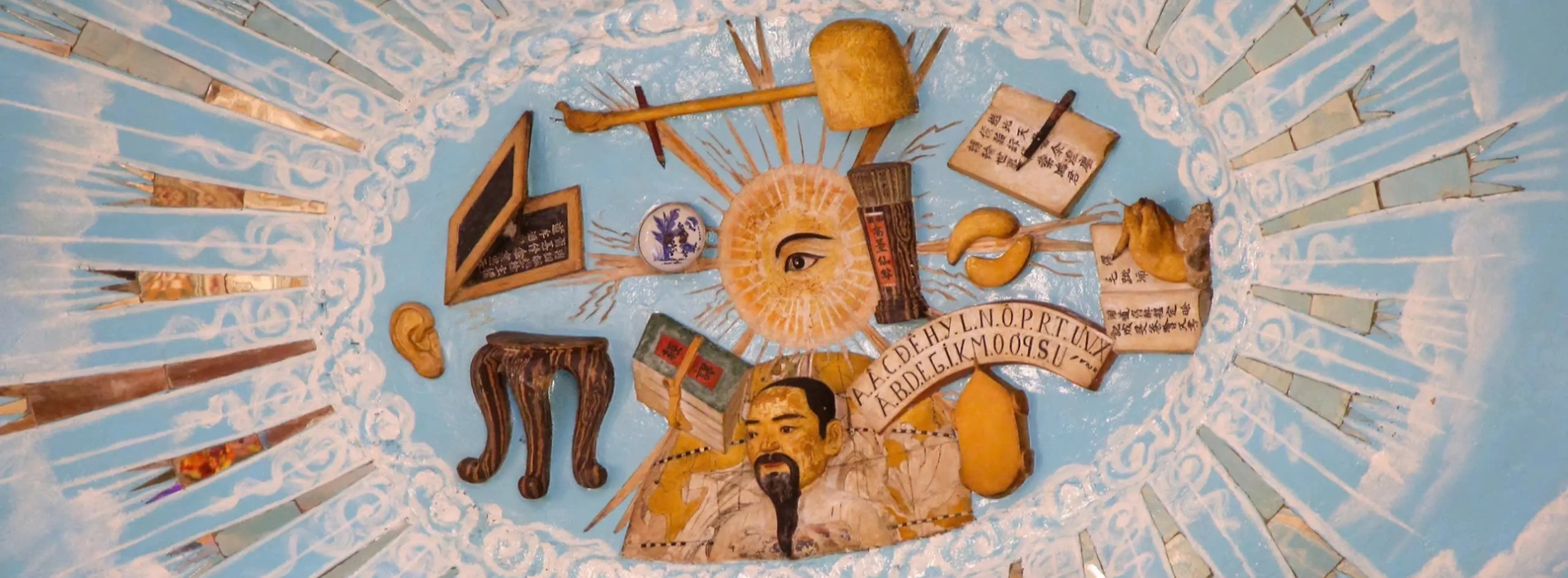
Tay Ninh Holy See (also known as Cao Dai Temple, Great Divine Temple) is perhaps the most one-of-a-kind religious structure you’ll ever encounter, as it truly reflects the essence of Caodaism: a fusion of multiple religions, drawing upon noble ideals to guide people toward goodness. That’s why this site showcases such a unique yet harmonious blend of Eastern and Western architecture, consistently leaving a strong impression on every visitor. Asia King Travel is excited to introduce it to you in the article below.
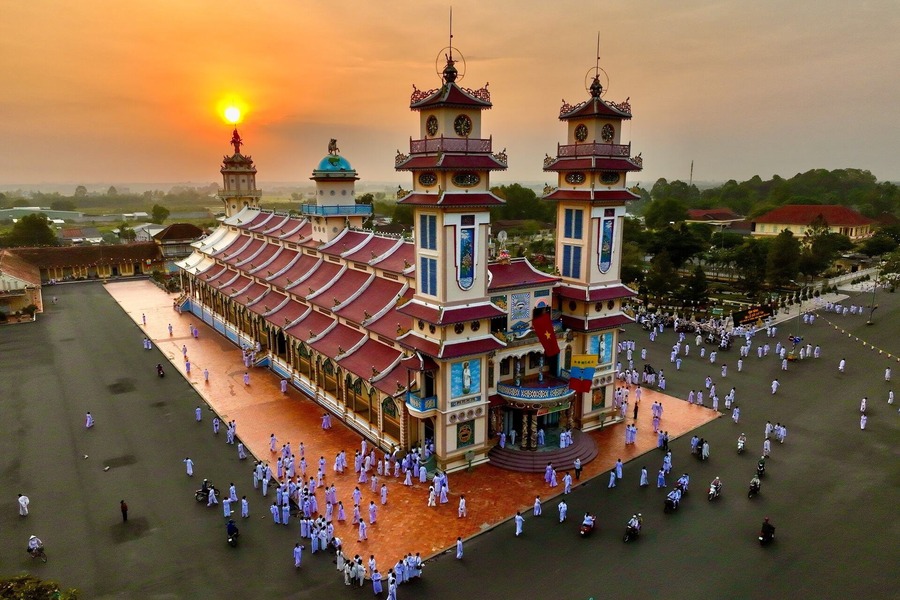
Tay Ninh Holy See after a ceremony. Photo: Hanoimoi
Caodaism was founded in Southern Vietnam in 1926. Cao Dai followers believe that all religions originate from a single source of divine wisdom. This wisdom is symbolized by the image of the “Divine Eye” - the eye of God. That’s why the symbol of the religion is the left eye. Tay Ninh Holy See is the first also largest religious site of Caodaism.
Caodaism bases its religious teachings on the roots of the doctrines and philosophies of the world’s major religions, guiding people to cultivate themselves and nurture goodness in their daily lives. These noble teachings have attracted over 3 million followers, making it the third-largest religion in Vietnam. Overseas followers have also established a Cao Dai temple in California, USA.
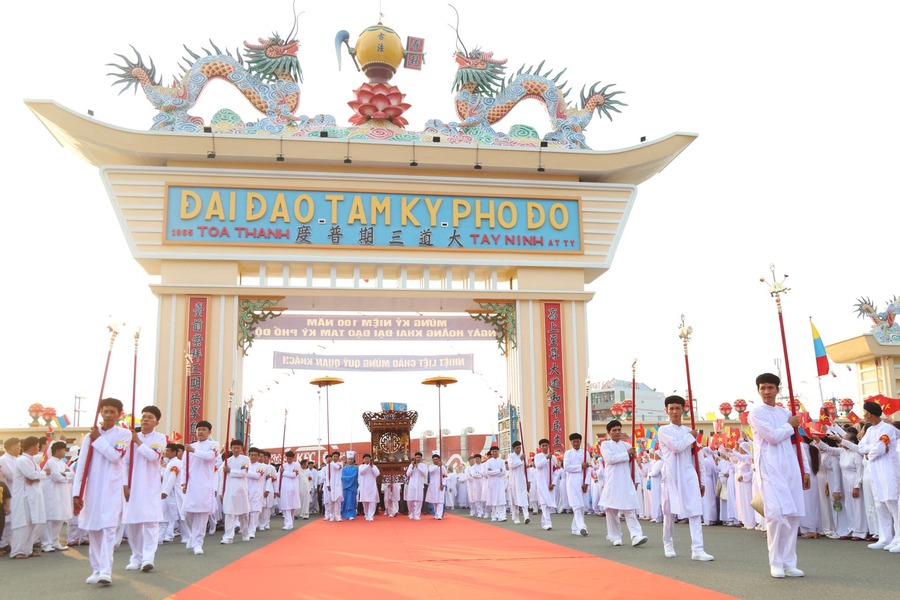
Caodaism is very popular in Southern Vietnam. Photo: Tay Ninh Newspaper
Tay Ninh Holy See is located on Pham Ho Phap Street, Hoa Thanh Town, Tay Ninh Province, just 6 kilometers from the center of Tay Ninh City. The surroundings are a vast green campus, creating a peaceful and serene atmosphere at all times even though it sits right in the middle of the town.
Tay Ninh Province and Ho Chi Minh City are not too far apart, so you can easily travel by road. From Ho Chi Minh City, start on Truong Chinh Street (near Tan Son Nhat Airport), then take Le Quang Dao Street to enter National Highway 22. Follow the highway for about 60 km until you reach Trang Bang Town, then turn onto Provincial Road 782. Keep going, then switch onto Provincial Roads 784 and 781, and you’ll arrive at your destination.
Suggested for you: Southern Vietnam Tour 10 days: Highlights Exploration
Tay Ninh Holy See is open to visitors year-round, but you might want to visit during major festivals to truly experience the festive atmosphere and gain deeper insights into Caodaism.
Via Duc Chi Ton Festival takes place on the 8th day of the first lunar month (usually early in the year). It’s a ceremony to pray for peace in the new year and to express gratitude to the parents. Dressed in traditional white ao dai, Cao Dai followers perform rituals and offer prayers to the Supreme Being. At the end of the ceremony, everyone gathers outside to admire giant animal models and enjoy lion dance performances.
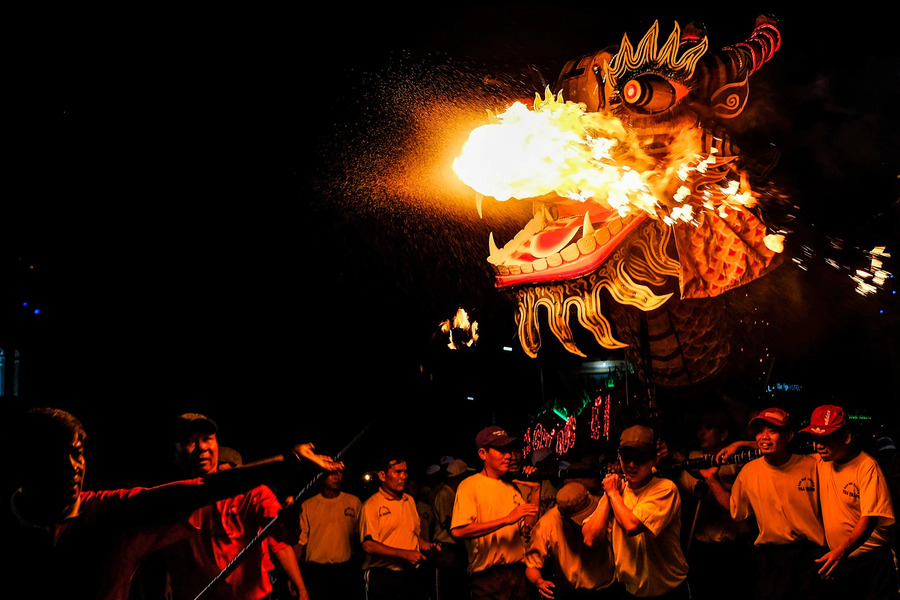
The most impressive sight for visitors at the festival is the dragon model breathing fire. Photo: Dan Viet
Yen Dieu Tri Cung Festival takes place on the 15th day of the eighth lunar month, coinciding with the Mid-Autumn Festival. On this day, you’ll witness a dazzling, colorful display of fruits, flowers, and offerings across hundreds of exhibition booths. Though these are just ordinary flowers and fruits, thanks to the skillful hands of artisans, they are transformed into vibrant and lively works of art.
The grounds of the Tay Ninh Holy See cover a total area of 1.2 square kilometers. There are many other auxiliary structures, such as the Mother Buddha Temple, stupas,... Of course, the centerpiece of this complex is the Holy Temple itself, which is 135 meters long and 27 meters wide. It is built in a long layout, with two bell towers at the front, one central tower in the middle, and another tower at the end of the building.
The main entrance faces west, featuring the three towers at 36 meters high (including the two bell and drum towers) at 27 meters. You might notice that many parts of the Holy Temple are designed using measurements that are fundamental multiples of nine.

A closer look of Tay Ninh Holy See. Photo: Nhan Dan Newspaper
The architecture of the Holy Temple resembles Catholic churches, but its curved roofs are shaped like those of East Asian pagodas. At the central tower, there’s a sculpture of a dragon winding over a globe, symbolizing the spread of the religion across the world. The dragon’s head faces east, signifying a constant gaze toward the origins.
Inside Tay Ninh Holy See, you’ll find the pinnacle of craftsmanship. Each pillar is intricately carved with a dragon coiling around it in stunning detail. Within the temple, there are altars dedicated to figures such as Buddha Shakyamuni, the Goddess of Mercy (Guanyin), Confucius, Laozi, and Jesus Christ.
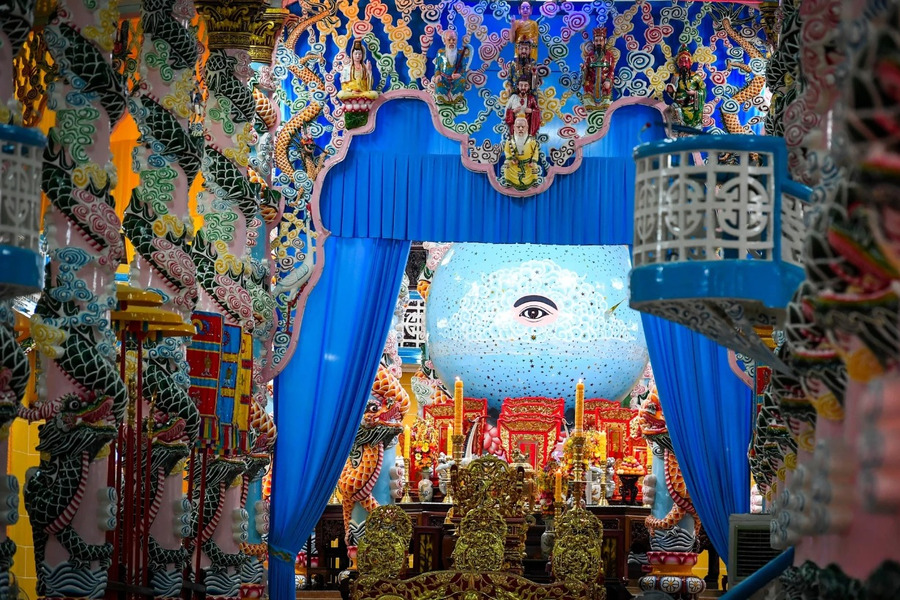
The galaxy globe with Divine Eye in the altar hall. Photo: Nhan Dan Newspaper
In the altar hall, eight dragon pillars are arranged in a circle. At the center stands a large globe representing the universe, with the Divine Eye symbol positioned at the front. Painted on the surface of the globe are 3,072 stars.
Tay Ninh Holy See is one of the many unique spiritual destinations in Southern Vietnam, where the influences of various cultures beautifully intertwine. Contact Asia King Travel to embark on unforgettable journeys across Vietnam!
Suggested for you: Discover The Cultural Diversity of Southern Vietnam